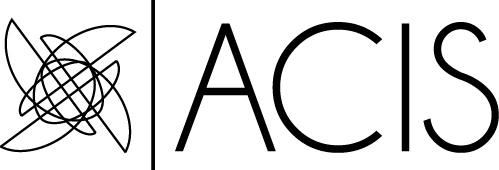
“I consider gender a component of analysis,” said Seán Kennedy during the Q&A after a session on post-Celtic Tiger Ireland, “not a given.” That meant, in his work, rigorous attention to the gendered representations and gendered social impact of austerity economics. In “Ireland and the Erotics of Austerity,” Kennedy examined media representation of austerity as a morality play about punishment for excess, the Irish submitting to ritualized humiliation for their own good as well as the edification of others. The Irish are portrayed as the “posterboys of austerity,” he said, exemplary in their “capacity to take pain.” However, “posterboys” renders the economic subject presumptively male, even as the impact of austerity is more deeply felt by women and minorities. What is the structure of consent here, Kennedy asked, and whose consent matters? To what extent is this Irish passivity a symptom of a broader neoliberal regime of consensual nonconsent and to what extent is it specifically Irish? In this disciplinary regime of manufactured consent, he argued, the masochistic contract inevitably breaks down, relapsing into abuse.
Fifty shades of green, as it were.
The panel included Jason Buchanan’s literary study of “mancession” in post-Celtic Tiger novels and Timothy White’s social science analysis of the injustices of austerity measures. The panel demonstrated what Irish studies (and indeed gender studies) can do so well: the “palimpsestic layering made possible in an interdisciplinary panel,” as Malcolm Sen put it in his review of last year’s conference in Dublin. These papers spoke to each other in a rich interdisciplinary conversation across discourses of psychoanalysis, media and literary studies, contemporary politics, economics, sociology, and, as Kennedy emphasized, gender.
Gender remains central and visible in Irish studies. There were panels and papers on women’s work, women’s bodies, and women’s voices (although citations of Foucaultian biopolitics and feminist scholarship have now replaced those formerly relentless citations of Matthew Arnold and Ashis Nandy). Gender was a trenchant tool of analysis across the program, from Marion Casey’s use of gender as a category for her students to note in their data mining of “seeking information about” ads in Catholic newspapers (all those lost brothers!), to Brian Ó Conchubhair’s reading of Celia de Fréine’s Anraith Neantóige (Nettle Soup) as a gendered revision of Beckett’s Godot. (“Could two women stay still and do nothing twice? I think not.”)
The efficacies of gender studies and psychoanalytic theory were best represented at the conference by Moynagh Sullivan’s keynote, a rich and careful reading of Emma Donoghue’s Room through the work of Bracha Ettinger, which is receiving increasing attention in feminist studies. Ettinger focuses on the matrixial, a pre-Oedipal realm of attachment and affect that, as Sullivan emphasized, pushes against the grain of the primary Oedipal narratives of identity and development. Deploying key concepts of transmission, space, relation, and sonority (listening), Sullivan convincingly argued that the novel is a queer feminist revision of the story of an emergent national subject.
Sullivan’s attention to sonority at the level of vowel sounds in the novel’s totemic words echoed for me across the conference’s attention to poetry—the series of rich roundtables on the work of Thomas Kinsella, Eavan Boland, Seamus Heaney, and Eiléan Ní Chuilleanáin; as well as Daniel Toibin’s ongoing sessions on Irish-American poetics and the conference’s recurring panel of Irish and Irish-American poets, organized by Nathalie Anderson as part of the ACIS program now for over 15 years. The “digital turn” in Irish studies was another significant thread. Marion Casey highlighted the pedagogical value of digital archival work—using the local to teach the global, developing qualitative readings of quantitative material—but she also noted explicit problems of access and long-term (costly) data storage. Joseph Lennon’s digital mapping of hunger strikes traced transnational networks of incarceration and influence, but I felt an implicit critique of the digital in his work: the entire digital project was based on his fortuitous discovery of a record book in a London archive, suggesting the continued value of traditional archival work.
I remain struck most, however, by Kennedy’s posterboys. The study of female voices and feminist political analysis remains critical, but we see little sustained analysis of masculinity, despite recent foundational publications and two collections on Irish masculinities. Further, the most rigorous discussions of sexuality seemed to proceed outside the sessions (or on concurrent discussions on Facebook), where members talked about the effect of the Indiana “religious freedom” law on next year’s conference at Notre Dame. Or at the business luncheon, where Paul Gleeson, the Consul-General of Ireland for the Southeastern US, commended the likely passage of marriage equality in Ireland in a constitutional referendum later this spring. Or after a final session on narrative voice on the last day, where the conversation turned to Benjy, the gay Irish bull,[i] facing the slaughterhouse for “failure to perform” but rescued by an American animal rights benefactor and moved to the UK. If, as Jennifer Terry has noted, “animals help us tell stories about ourselves, especially when it comes to matters of sexuality,”[ii] the tabloid fascination with Benjy surely suggests something of this particular historical moment and its transnational contexts. Benjy being a posterboy, too, of sorts, for displacement—for the things we can and can’t (or don’t) say about sexuality, and where we say them.
[i] See, for example, Clare McCormack, “Benjy the gay Irish bull moves to greener pastures in search of love,” Irish Independent 14 December 2014.
[ii] Jennifer Terry, “‘Unnatural Acts’ in Nature: The Scientific Fascination with Queer Animals,” GLQ: Journal of Lesbian and Gay Studies 6.2 (2000): 151-193; p. 151.
